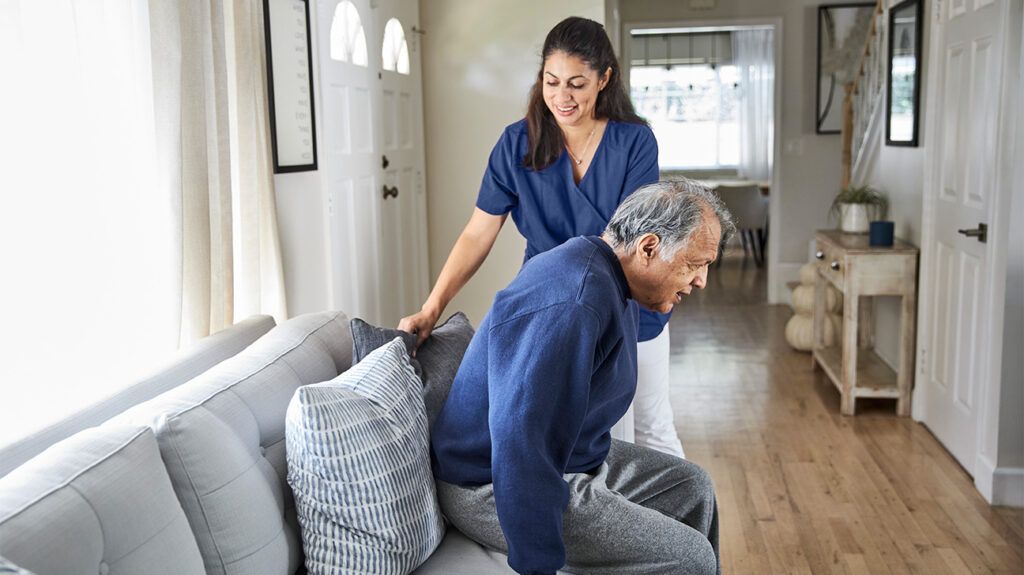- Past studies show that certain lifestyle factors, such as exercising regularly, may help lower a person’s risk for Alzheimer’s disease.
- A new study says that older adults who spend more time sedentary may be at a higher risk for lower cognition and brain shrinkage in areas linked to the development of Alzheimer’s disease, no matter how much they exercised.
- The study adds to evidence that being sedentary is more detrimental to health than not exercising often enough.
Past studies show that certain lifestyle factors — such as eating a healthy diet, not smoking, getting enough sleep, and exercising regularly — may help lower a person’s risk for Alzheimer’s disease.
An estimated
“There are no current treatments that cure Alzheimer’s disease,” Marissa A. Gogniat, PhD, assistant professor of neurology at the University of Pittsburgh School of Medicine, told Medical News Today. “Therefore, modifiable health factors that may prevent Alzheimer’s disease are of great interest and need.”
Gogniat is the lead author of a new study, which says that older adults who spend more time sedentary — such as sitting or lying down — may be at a higher risk for
The findings were recently published in
For this study, researchers analyzed health data from 404 participants of the Vanderbilt Memory and Aging Project, ages 50 and over.
Study participants were directed to wear an activity-monitoring watch — called a triaxial accelerometer — for 24 hours a day for one week, and were also given neuropsychological assessment and brain MRI scans over a seven-year period.
“We know a lot about the benefits over physical activity as a preventative measure for Alzheimer’s disease and this was my main area of study for most of my career,” Gogniat said.
“I started looking at the 24-hour period of activity and noticed that people also spend a lot of time sitting. I was curious to better understand the independent contribution of sitting to risk for Alzheimer’s disease,” she said.
Upon analysis, researchers found that participants who spent more time being sedentary were at a higher risk for experiencing
“This is significant because the common thought has always been that if you exercise regularly, it doesn’t really matter what else that you do,” Gogniat explained. “This study showed that even after accounting for how physically active people were, sedentary behavior was still predicting cognitive decline and neurodegeneration.”
Additionally, the scientists discovered that these findings were strongest in study participants who carried the
“We examined whether the association between sedentary behavior, brain health, and cognition was impacted by whether someone was an APOE4 carrier,” Gogniat detailed.
“Many of the observed associations linking greater sedentary time with brain health and cognitive outcomes were present in APOE4 carriers, but not in non-carriers, suggesting that increased sedentary [behavior] may be especially harmful for people at increased genetic risk for Alzheimer’s disease.”
— Marissa A. Gogniat, PhD
MNT spoke with Constance Katsafanas, DO, neurologist at the Marcus Neuroscience Institute and program director of the Florida Atlantic University Schmidt College of Medicine’s Neurology Residency Program, about this study.
Katsafanas commented that while the study’s sample size was small, the results suggest that it’s not just activity, but minimizing time spent sitting, that could affect cognition as we age.
“Other studies have looked at similar things before. There are studies about people who are more sedentary having smaller cortical thickness and worse episodic memory, for instance,” she continued.
“But this one looked in a slightly different direction as well, specifically seeing if these effects persisted in the face of the patients having the
weekly physical activity recommended by the CDC — 87% of the patients in this study accomplished the amount and intensity of weekly physical activity recommended by the CDC — so it adds a new angle to the conversation.”
— Constance Katsafanas, DO
“I’d like to see if the results are reproducible, that is, if other studies find similar results,” Katsafanas added. “I’d also like to see studies that track activity vs. time spent sedentary for the duration of the study. This study recorded the level of activity over a week, and the patients were then followed over seven years. I’d like to see the level of activity tracked for the duration of the study.”
For readers who want to learn how to move more and become less sedentary during the day, MNT asked Sanjula Dhillon Singh, MD, PhD, MSc (Oxon), instructor of neurology at Massachusetts General Hospital and Harvard Medical School, and principal Investigator of the Brain Care Labs, for her top tips.
“The good news? If sitting too long is a risk factor, it’s one we can do something about. Standing up, moving more, and breaking up long stretches of sitting might be some of the easiest ways to protect your brain as you age.”
— Dhillon Singh, MD, PhD, MSc (Oxon)
Singh said readers don’t need a fancy gym membership to make a difference and offered these simple steps to help lower their daily sedentary time:
- Set a timer to stand up and stretch every 30-60 minutes if you are sitting.
- Take calls while walking or pace around the house during conversations.
- Make it social — invite a friend or loved one for a walk or join a virtual movement class.
“Doctors often ask patients how active they are — but rarely how many hours a day they spend sitting,” Singh said. “This study suggests maybe doctors should be asking both of these questions! Even if you’re hitting your step goals or going to the gym, spending too much of the day sitting may still be quietly harming your brain.”
“There’s actually so much we can do to take good care (of) our brains and lower our risks of developing dementia — especially since about







